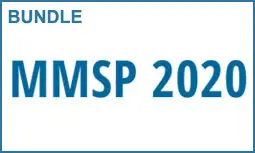Time Difference of Arrival Estimation with Deep Learning -- From Acoustic Simulations to Recorded Data
Pasi Pertilä, Mikko Parviainen, Ville Myllyla, Anu Huttunen, Petri Jarske
-
Members: FreeSPS
IEEE Members: $11.00
Non-members: $15.00Length: 10:02
22 Sep 2020
The spatial information about a sound source is carried by acoustic waves to a microphone array and can be observed through estimation of phase and amplitude differences between microphones. Time difference of arrival (TDoA) captures the propagation delay of the wavefront between microphones and can be used to steer a beamformer or to localize the source. However, reverberation and interference can deteriorate the TDoA estimate. Deep neural networks (DNNs) through supervised learning can extract speech related TDoAs in more adverse conditions than traditional correlation -based methods.
Acoustic simulations provide large amounts of data with annotations, while real recordings require manual annotations or the use of reference sensors with proper calibration procedures. The distributions of these two data sources can differ. When a DNN model that is trained using simulated data is presented with real data from a different distribution, its performance decreases if not properly addressed.
For the reduction of DNN –based TDoA estimation error, this work investigates the role of different input normalization techniques, mixing of simulated and real data for training, and applying an adversarial domain adaptation technique. Results quantify the reduction in TDoA error for real data using the different approaches. It is evident that the use of normalization methods, domain-adaptation, and real data during training can reduce the TDoA error.
Acoustic simulations provide large amounts of data with annotations, while real recordings require manual annotations or the use of reference sensors with proper calibration procedures. The distributions of these two data sources can differ. When a DNN model that is trained using simulated data is presented with real data from a different distribution, its performance decreases if not properly addressed.
For the reduction of DNN –based TDoA estimation error, this work investigates the role of different input normalization techniques, mixing of simulated and real data for training, and applying an adversarial domain adaptation technique. Results quantify the reduction in TDoA error for real data using the different approaches. It is evident that the use of normalization methods, domain-adaptation, and real data during training can reduce the TDoA error.



